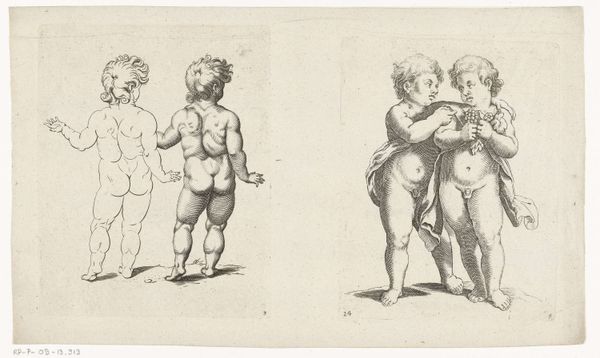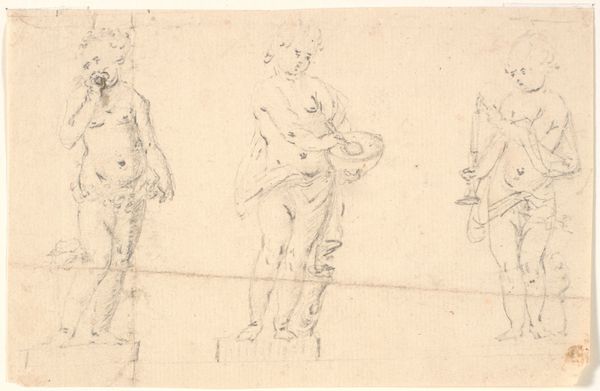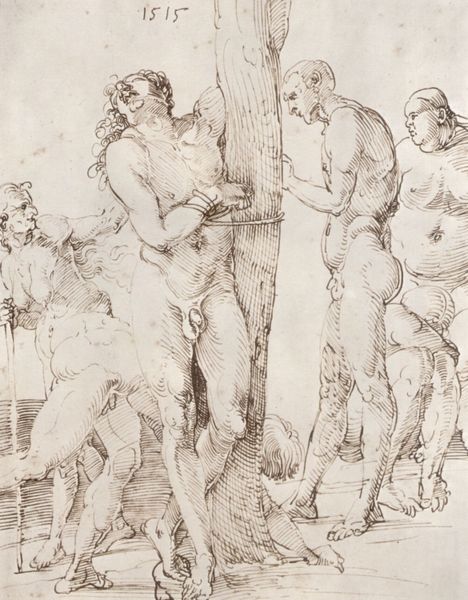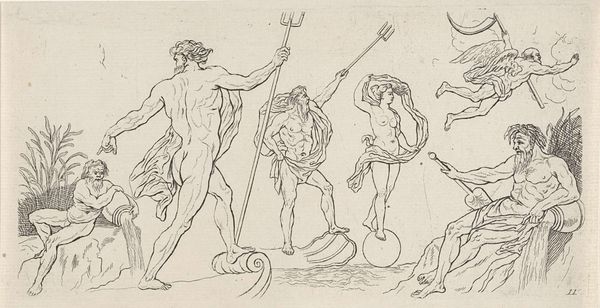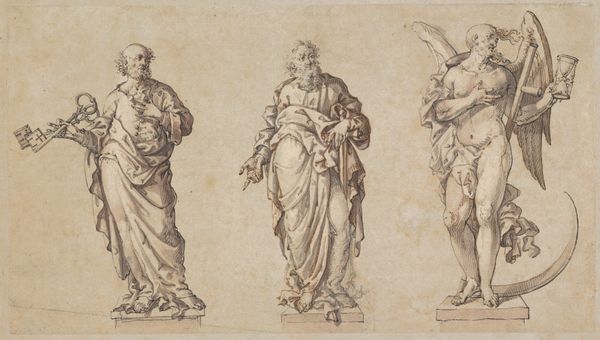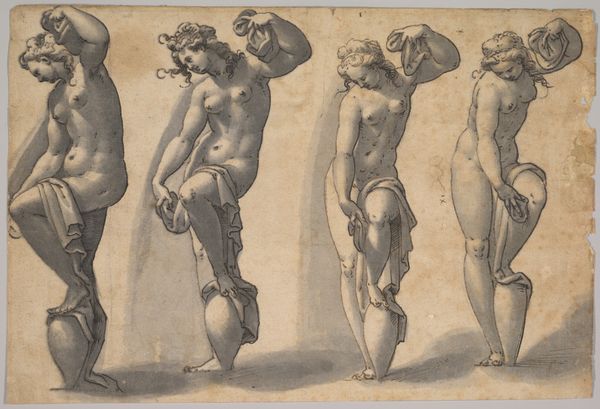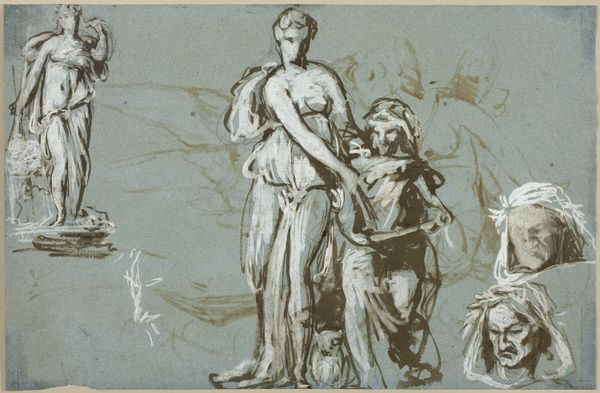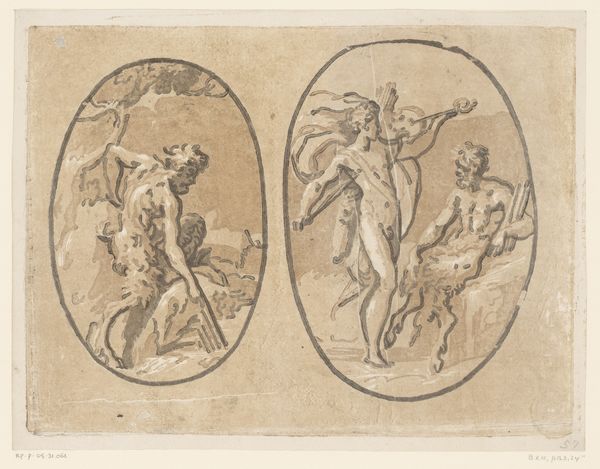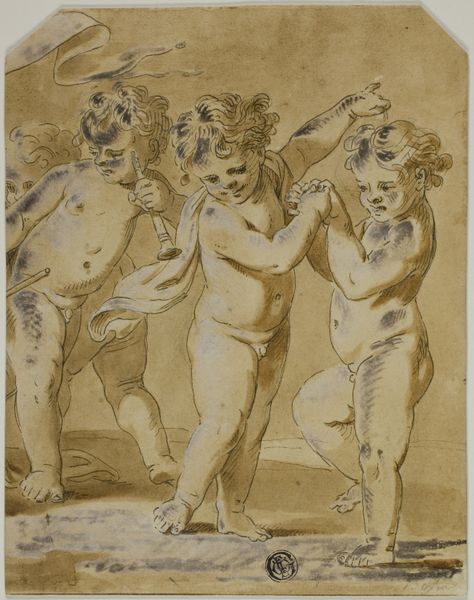
drawing, gouache, ink, pencil, graphite
#
portrait
#
drawing
#
allegory
#
baroque
#
gouache
#
figuration
#
ink
#
pencil
#
15_18th-century
#
graphite
#
history-painting
Copyright: Public Domain
Curator: Let’s turn our attention to Gaspare Diziani’s "Mars, Venezia und Neptun (Scheinskulptur)" a drawing here at the Städel Museum rendered in ink, gouache and pencil. What are your initial thoughts? Editor: There’s an immediate coolness to the palette—the limited range of grey tones gives the work a restrained and classical mood, as if we are observing faint sculptures or figures under a subdued light. Curator: Yes, and this muted palette seems perfectly aligned with its probable function as a preparatory study. Diziani was operating within a 18th-century Venice that saw its fortunes entwined with complex political and mercantile dynamics, mirrored by Venice's own self-image as a potent, quasi-mythical force in that reality. Consider the allegorical representation of Venice, positioned centrally: her proximity to Mars and Neptune perhaps suggests Venice's power brokering between land and sea. Editor: The composition itself contributes significantly to that effect. The placement of Venezia between Mars and Neptune creates a visual equilibrium, reinforcing that symbolic positioning you're speaking of. The texture of the paper is palpable here too, almost grounding these imagined figures into something that could be touched and studied materially. Curator: It's key to note that allegory within this time provided fertile ground for exploring identity and power, often framing gendered representations in specific ways. Notice how Venezia embodies sovereignty—crowned and poised over the lion—compared to the masculine energies represented by the war-ready Mars and the elemental Neptune. How do such symbolic hierarchies intersect with Venice's historical realities, where civic authority, trade, and myth coalesced? Editor: The semiotic weight of those attributes - the lion, Neptune's trident, Mars' spear, the armour - anchors their meaning. Without them, we lose crucial context. But focusing solely on symbolic meaning sometimes obscures the formal elegance of the piece. The way Diziani uses shadow, for instance, or the controlled spontaneity of his lines…these aspects provide so much to the drama and beauty of the figures. Curator: Perhaps, but isolating form from socio-political meaning risks muting the artist's cultural engagement. Understanding these representations alongside Venice's complex identity, trade and diplomatic position contextualizes our understanding, doesn't it? Editor: Point taken. Appreciating that tension does indeed bring us to a richer understanding of both the object, and the complex cultural landscape in which it emerged.
Comments
No comments
Be the first to comment and join the conversation on the ultimate creative platform.

